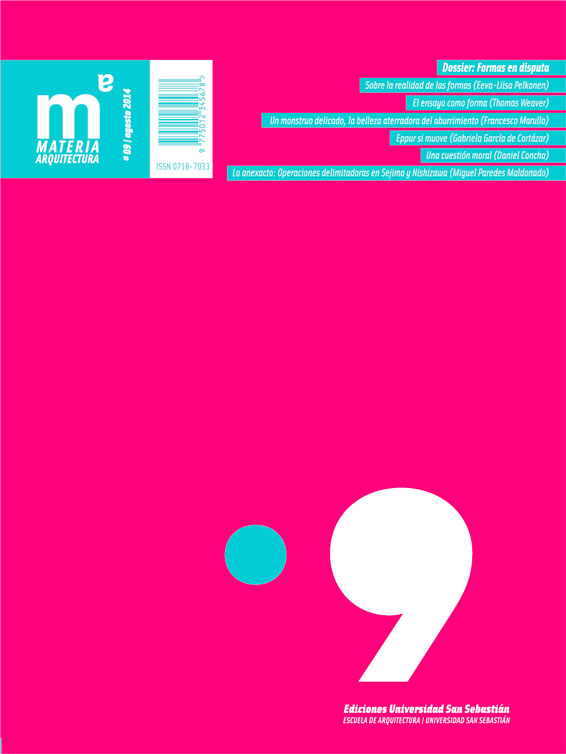A Delicate Monster. Three passages on the terrifying beauty of boredom
Article Sidebar
Keywords:
Main Article Content
Abstract
Centuries of literature depicted boredom as the hidden malaise of modernity: a disease of the soul which progressively separated
man from his natural endowments, weakening his capacity of self-reflection into indifference.
Yet, paradoxically it is boredom one of the distinctive traits of the post-Fordist economy: that condition of unresolved longing, when
the soul is suspended within an uncertain presentness and life is experienced “as such”, open to unforeseen possibilities. If in the
past labor activities were functionally limited within spatial rigid enclosures, on the contrary contemporary modes of production tend
to flaunt the intrinsic indeterminacy and genericness of the human potential providing empty stages for life to be simply performed.
In this sense, boredom could be considered the index of human indeterminacy, the place where life is contemplated in its pure
freedom: that formless state of hesitation necessary for either realizing or not its embedded potential. When any distinction between
labor and life dissolved into action, form can no longer be considered as a steady object, but rather as a process of differentiation
through which life becomes itself, stemming out of a context as the conscious expression of an inner drive, a “form-of-life”.
Article Details
Materia Arquitectura provides immediate and free access to all the content of this online edition, published simultaneously with the print edition.
Materia Arquitectura does not charge authors for any concept.
All contents of this electronic edition are distributed under the Creative Commons license of "Attribución-shareAlike 4.0 Internacional" (CC-BY-SA).
The rights of the published texts and images belong to their authors, who grant Materia Arquitectura the license for their use. The management of the permits and the authorization of the publication of the images (or of any material) that contains copyright and its consequent rights of reproduction in this publication is the sole responsibility of the authors of the articles.
As long as they mention their origin, the authors are free to distribute their articles by other means. Any total or partial reproduction of the material must mention its origin.
Downloads
References
AGAMBEN, G. (2004). The Open. Man and Animal (K. Attel, Trad.). Stanford: Stanford University Press.
BATAILLE, G. (1985). Formless. En G. Bataille, Visions of Excess. Selected Writings, 1927-1939. (A. Stoekl, Trad. y Ed., pág. 31) Mineápolis: University of Minnesota Press.
BURKE, E. (1958). A Philosophical Enquiry into the Origin of Our Ideas of the Sublime and Beautiful. Londres: Routledge (1a. ed., 1757).
KANT, I. (1961). Observations on the Feeling of the Beautiful and Sublime (John T. Goldthwaite, Trad.) University of California Press (1a ed., 1764).
KRACAUER, S. (1995). The Hotel Lobby. En S. Krakauer, The Mass Ornament. Weimar Essays (T. Y. Levin, Trad. y Ed., págs. 173-185) Cambridge, Mass.: Harvard University Press.
LYOTARD, J. F. (1994). Lessons on the Analytic of the Sublime. (Elizabeth Rottenberg, Trad.) Stanford: Stanford University Press.
SIMONDON, G. (2006). Individuazione Psichica e Collettiva (Muriel Combes, Introdución; Paolo Virno, Trad. y Ed.). Roma: Derive e Approdi (1a ed., 1989).
VIRNO, P. (1994). Mondanità. L'idea di 'mondo' tra esperienza sensibile e sfera pubblica. Roma: Manifestolibri.
WORRINGER, W. (1997). Abstraction and Empathy. A Contribution to the Psychology of Style (M. Bullock, Trad.) Chicago: Ivan R. Dee. (1a ed. 1908).
Most read articles by the same author(s)
- Francesco Marullo, Un monstruo delicado, tres pasajes sobre la belleza aterradora del aburrimiento , Materia Arquitectura: No. 09 (2014): Materia Arquitectura 09 (Agosto/August 2014)
